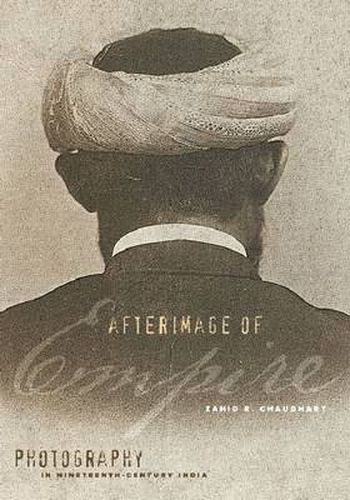Readings Newsletter
Become a Readings Member to make your shopping experience even easier.
Sign in or sign up for free!
You’re not far away from qualifying for FREE standard shipping within Australia
You’ve qualified for FREE standard shipping within Australia
The cart is loading…






Afterimage of Empire provides a philosophical and historical account of early photography in India that focuses on how aesthetic experiments in colonial photography changed the nature of perception. Considering photographs from the Sepoy Revolt of 1857 along with landscape, portraiture, and famine photography, Zahid R. Chaudhary explores larger issues of truth, memory, and embodiment.
Chaudhary scrutinizes the colonial context to understand the production of sense itself, proposing a new theory of interpreting the historical difference of aesthetic forms. In rereading colonial photographic images, he shows how the histories of colonialism became aesthetically, mimetically, and perceptually generative. He suggests that photography arrived in India not only as a technology of the colonial state but also as an instrument that eventually extended and transformed sight for photographers and the body politic, both British and Indian.
Ultimately, Afterimage of Empire uncovers what the colonial history of the medium of photography can teach us about the making of the modern perceptual apparatus, the transformation of aesthetic experience, and the linkages between perception and meaning.
$9.00 standard shipping within Australia
FREE standard shipping within Australia for orders over $100.00
Express & International shipping calculated at checkout
Afterimage of Empire provides a philosophical and historical account of early photography in India that focuses on how aesthetic experiments in colonial photography changed the nature of perception. Considering photographs from the Sepoy Revolt of 1857 along with landscape, portraiture, and famine photography, Zahid R. Chaudhary explores larger issues of truth, memory, and embodiment.
Chaudhary scrutinizes the colonial context to understand the production of sense itself, proposing a new theory of interpreting the historical difference of aesthetic forms. In rereading colonial photographic images, he shows how the histories of colonialism became aesthetically, mimetically, and perceptually generative. He suggests that photography arrived in India not only as a technology of the colonial state but also as an instrument that eventually extended and transformed sight for photographers and the body politic, both British and Indian.
Ultimately, Afterimage of Empire uncovers what the colonial history of the medium of photography can teach us about the making of the modern perceptual apparatus, the transformation of aesthetic experience, and the linkages between perception and meaning.